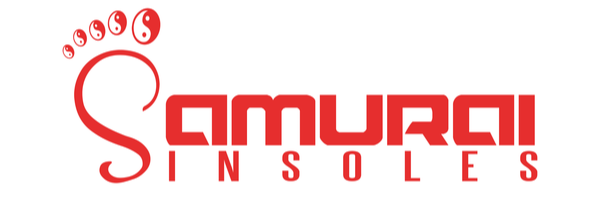Having chronic pain in your heels can really interfere with your life. Being laid up on the couch or suffering through a long work shift begins to wear on a person.
If you're dealing with foot pain, you aren't alone. A survey from the American Podiatric Medical Association found that most adults experience chronic foot pain.
Heel pain is no fun. So we've put together a guide to help you eliminate constant discomfort you experience in your feet. Read on to learn more.
1. Find Out the Cause of Your Heel Pain
If you have chronic heel pain, see a podiatrist if you can. There are several different causes of heel and foot pain. The treatments for those ailments aren't all the same.
Some possible causes for your heel pain could be Plantar Fasciitis, heel bursitis, Achilles tendonitis, or stress fracture.
You can put off this visit by seeing if you can alleviate the pain on your own. Often, just a little extra TLC and life style changes can cure the discomfort.
2. Incorporate Stretching into Your Daily Routine
Stretching is especially effective if you have plantar fasciitis (PF). Fascia is the ligament in your foot that connects your heel to your toes. Think of it like a rubber band.
If your fascia is strained, it will develop little tears. That's plantar fasciitis. Doctor's can't agree on the exact cause of PF.
The best way to ease the symptoms is to keep the fascia loose through daily stretching.
Some stretches you can try include:
- Put a rolling pin on the ground and roll your feet back and forth. Press down to get in there down to the fascia.
- Take a long towel and hold both ends like a jump rope. Place your toes in the middle of the towel and pull your toes back. You should feel a stretching through your arch.
- Use a towel like in stretch #2. Instead of putting the towel on your toes, rest it under your arch. Pull up so the top of your foot lifts towards you.
3. Start Soaking and Icing Your Feet
Alternating Epsom salt foot baths and icing your heels is a great way to minimize swelling and aches.
Epsom salts contain magnesium. When you soak your feet, the magnesium will absorb into your skin. This will help relieve inflammation that could be causing your heel pain.
Icing your feet for 20 minutes is another great way to cut down on inflammation. To cut down the cost of buying Epsom salts, ice your feet on days you don't soak.
4. Use Sports Tape to Create Support
For temporary arch support, learn how to tape your feet.
Kinesiology tape or regular medical tape can both be used. Kinesiology tape is the better choice if you plan on being active while wearing it.
There are many Youtube videos that instruct you on the technique. The basics of it are that you tape underneath the arch and around the heel.
If you find that taping gives you a lot of relief it might be time to get orthotics. Taping up your feet every day will get old, fast!
5. Wear Orthotics in Your Shoes
Orthotics are a convenient way to get instant pain relief.
There are a few kinds of orthotics you can try. A prescription orthotic is created directly from the molds of your feet.
The problem is it's not covered by insurance. Out of pocket, you'll be spending a few hundred dollars.
Then there's the much cheaper end of the spectrum. These drug store orthotics can require a lot of cutting and fiddling to get them to fit in your shoe.
Online you can find a higher quality OTC orthotic that will fit your shoes and feel just as comfortable.
6. Switch Out Your Sneakers
Sneakers are not meant to be worn until the soles come off! Even a few months of wearing down of the rubber bottoms will throw your feet out of alignment.
Make sure you're switching out your shoes regularly. The amount of time depends on how often you wear them and for what.
Regular runners should be switching out their shoes every 6 months. If you do less high impact sports, you can get away with every 8 months to a year.
7. Change Your Exercise Regimen
High impact sports and exercise wear down your shoes. It can also wear down your feet!
Jumping and running is a great work out. As you get older it's going to put a lot more stress on your feet. Even if you're young, if you have plantar fasciitis, they might not be the ideal exercises for you.
Try switching over to a low impact cardio routine. Maybe the stair climber or elliptical. You might notice that running isn't worth the pain.
8. Get to a Healthy Weight
Often times, heel pain is caused by a sudden, significant weight gain. Your feet aren't used to carrying it and can cause extra stress.
If your weight gain wasn't sudden, it still might be too much for your feet to handle. For someone with a very high body mass index, consider getting to a healthier weight.
While there are more invasive fixes, you might be able to cure your pain on your own. That way you can avoid the cost and recovery.
9. Try Non-Surgical Treatments
There are some treatments you can try for foot pain right in the podiatrist's office.
One popular method is injecting corticosteroids directly into the ligament. This will help relieve inflammation and reduce scar tissue. Because it is a steroid, your doctor will probably limit how often you can get this done.
More experimental treatments are also out there. It's a gamble as to whether it will work, and you'll often have to pay out of pocket.
10. Consider Surgery
Surgery should always be a last resort. Keep in mind that foot surgery can be a long and painful healing process.
Do your best to exhaust all your other options before you go under the knife. Surgery isn't always the quick fix you expect it to be.
You Don't Have to Suffer from Foot Pain
Whether you experience pain in your heels, arches, or even ankles and knees, orthotics can help.
If you have any questions about foot pain and how orthotics can help, contact us!
We'll get you back on your feet in no time.




